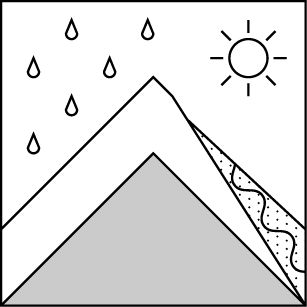Basic Information
Observation Details
Observation Date:
March 21, 2023Submitted:
March 22, 2023Observer:
NWAC Observer - Brooke MaushundZone or Region:
Stevens PassLocation:
Rock Mountain Area (All Aspects // 2670-7063')Signs of Unstable Snow
Recent Avalanches?
YesCracking?
IsolatedCollapsing?
None ExperiencedMedia/Attachments









Advanced Information
Weather Summary
Cloud Cover:
Mostly SunnyTemperature:
>32°FWind:
Moderate , NEAppearing to not have a refreeze at lower elevations and a very weak one in the alpine overnight, temperatures were above freezing when we left our cars in the morning. There were few, high clouds throughout the day, with winds calm below treeline and increasing to moderate from the NE as we rose in elevation to the ATL. The sun was strong, and once dropping off ridgeline into the NTL on solar aspects we properly were down to our base layers immediately.
Snowpack Observations
With an almost non-existent refreeze overnight at lower elevations, the skinning from 2650'-5180' had a soft, moist surface with a harder crust underneath that mostly could be broken with healthy force from a ski… but at times was more supportable and provided for brief periods of more exciting skinning. From 5180' to ridgline, we found small pockets of hard, wind pressed snow over 2-3cm of soft snow, on top of the same crust. Prepared for a the full gamut of spring conditions, we were equipped with ski crampons but didn't use them as while this skinning was challenging, these would not have improved our traction much. We booted the last portion to the summit and felt secure.
On the skin up to ridgeline, we took note of many wet loose slides on solars, and very large looming cornices guarding the open slope towards the summit. Given the overhead hazard, we opted to gain the ridge early. Giving wide margins to the cornices by staying downhill of landmarks of ground like tips of trees sticking out the snow pack, we made our way up the ridge. While there was minimal snow available for transport, the wind could be seen blowing around .5cm of light unconsolidated snow at the highest ridgelines. Thin wind textured surfaces could still be seen on northerlies. Given our vantage, we could spot small loose slides on northerlies we didn't travel on during the day that were likely triggered by snow fall from trees or cliffs. Northerlies we travelled through still had old wind loading, but wind slabs appeared to be unreactive.
We are starting to enter a spring time snowpack with the usual suspects: wet loose and cornice fall. With the diurnal wet loose cycle and cornices losing more strength with the heat up throughout the day, timing and an understanding of the sun's relationship to aspect & incline is crucial to travel in the mountains. Careful navigation near ridgeline is critical to avoid or limit exposure to the cornice hazard: not just when walking near the tops of them, but being aware of overhead hazard traveling under them or in their runout zone if they were to fail.
Avalanche Problems
| Problem | Location | Distribution | Sensitivity | Size | Comments |
|---|---|---|---|---|---|
 Wet Loose
Wet Loose
|
|
Comments: Wet loose activity abounded on solars NTL and ATL, both natural and skier-triggered up to size D2. While we only observed older warning signs of wet loose BTL and very few slides themselves, there still is potential for slides to reach the BTL, especially on more solar aspects. Pinwheels were the size of tires, and roller balls were up to yoga ball size — if anyone has a better comparison here, let me know. |
|||
 Cornice
Cornice
|
|
Comments: While we did not observe any cornices actively falling, there was evidence of past cornice fall in 2 separate locations in the upper NTL and ATL. Huge cornices loom a lot of the Hwy 2 Corridor's ridges, and it would be wise to give them a wide berth, and utilize landmarks such as trees, if available, to remain off of them along ridgelines. |
